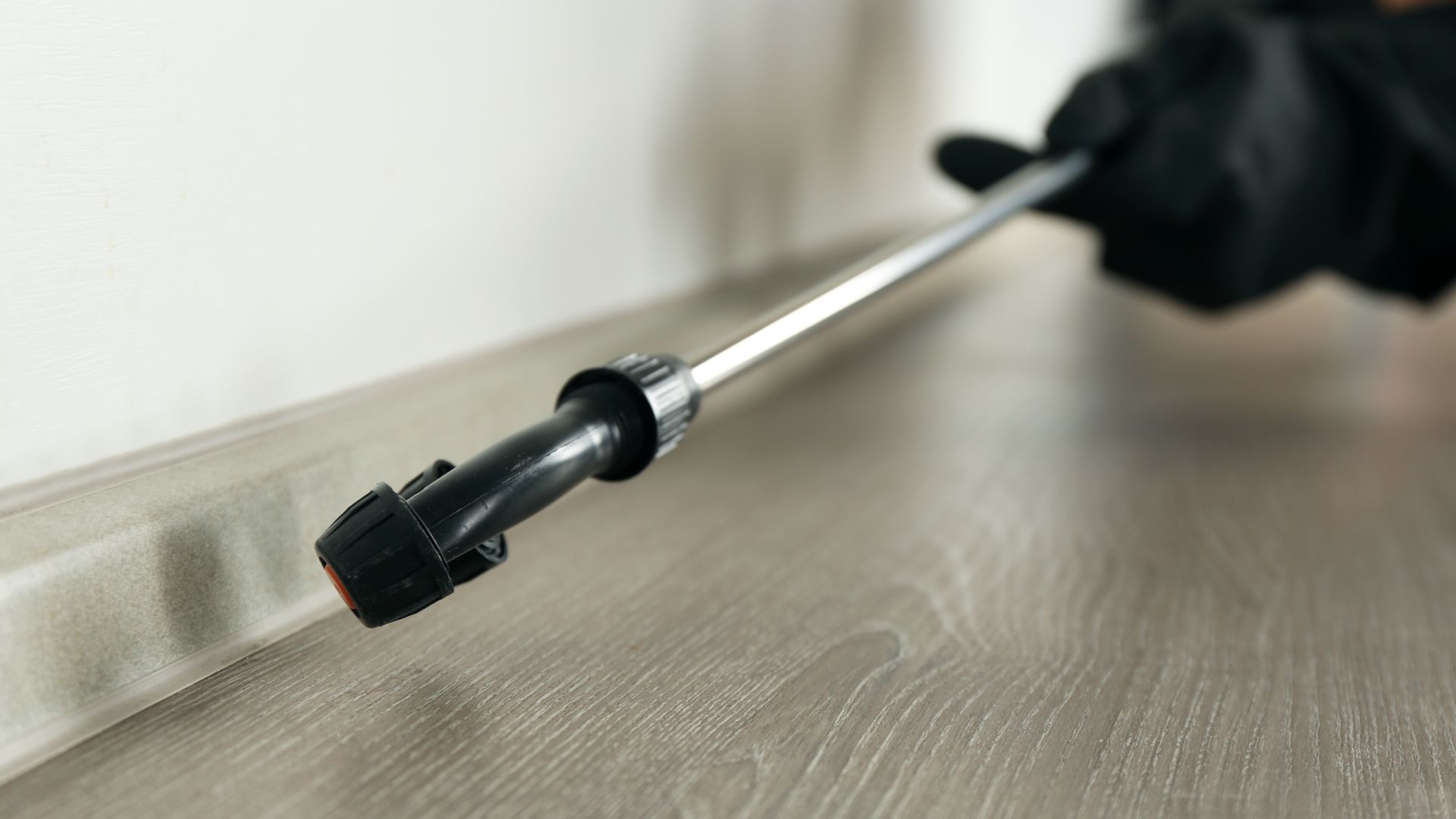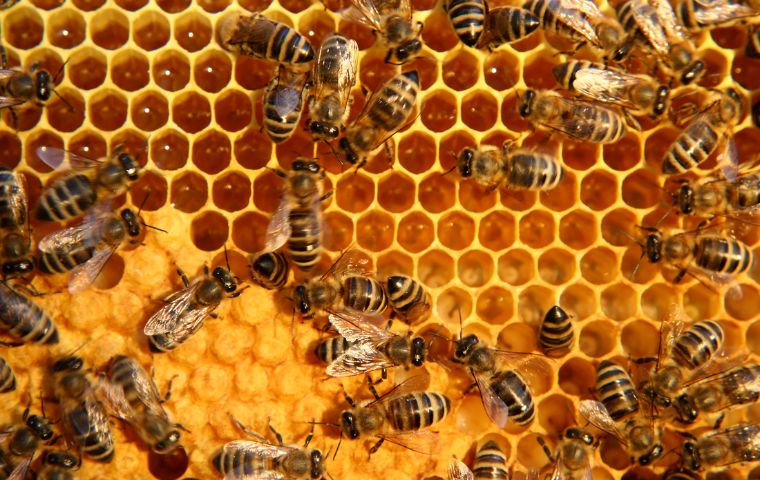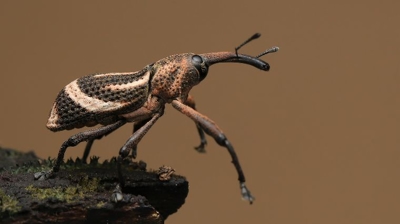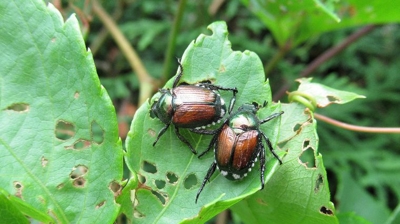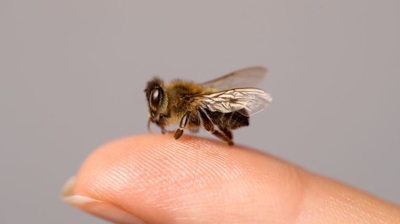
What Are Bees?
Bees are flying insects known for their crucial role in pollination and, in some species, for producing honey and beeswax. Belonging to the superfamily Apoidea, bees are closely related to wasps and ants, but they are unique in their strong association with flowering plants.
Are Bees Harmful?
While bees are overwhelmingly beneficial to ecosystems and human agriculture, there are certain situations in which bees can be considered harmful:
- Defensive Stings: Most bee species are not aggressive by nature, but they will sting if they feel threatened or if their nest is disturbed. Honey bees, in particular, are known to defend their hives vigorously.
- Pain and Swelling: Bee stings can cause localized pain, redness, and swelling, which is uncomfortable but generally not serious for most people.
- Anaphylaxis: For individuals with bee sting allergies, even a single sting can trigger a severe, potentially life-threatening allergic reaction known as anaphylaxis. This is a medical emergency that can result in shock, difficulty breathing, or even death without prompt treatment.
- Swarm Attacks: Africanized honey bees are a hybrid of African and European honey bees. They are more defensive and aggressive than other bee types. These bees are known for their heightened sensitivity to disturbances and their tendency to swarm and chase perceived threats for long distances.
- Structural Damage: Bees, especially carpenter bees, can cause physical damage by boring holes into wood to create nests. Over time, this can weaken structural elements of buildings, fences, decks, and eaves.
- Unwanted Colonies: Honey bees may establish nests inside walls, attics, chimneys, or other cavities in buildings. These nests can become large and heavy, cause stains from dripping honey, and attract other pests such as ants, wax moths, and rodents.
Learn more: Do Bees Bite?
Bee Control
Hiring our professional bee exterminators offers several critical benefits, especially when dealing with an infestation that poses safety risks or affects property value. Here are some of the advantages of entrusting this task to our licensed experts:
- Safety for People and Property: Bees can be extremely defensive, especially if their hive is threatened. Attempting to remove or exterminate bees without proper knowledge or protective gear significantly increases the risk of painful stings, allergic reactions, or even anaphylaxis in sensitive individuals. Our professional exterminators are trained to handle these situations safely, using the correct procedures and protective equipment to minimize danger.
- Accurate Identification and Targeted Approach: Not all bees should be exterminated. Our professionals can distinguish between species—such as honeybees, carpenter bees, and wasps—and understand which require removal versus extermination. In many areas, honeybees are protected, and whenever feasible, we will relocate them rather than destroy them. Misidentification by untrained individuals can lead to illegal or unnecessary extermination and ecological harm.
- Proper Tools, Equipment, and Methods: Bee extermination and removal may require specialized equipment like bee suits, smoke applicators, dusters, and insecticides that are not available to the general public. Our professionals also use methods designed to be effective while minimizing damage to structures and the surrounding environment. DIY solutions are often ineffective, potentially pushing bees deeper into walls or causing them to scatter and form new colonies nearby.
- Structural Preservation: Bees often build nests in wall voids, attics, chimneys, or crawl spaces. Untrained removal attempts can lead to extensive damage to walls, insulation, or roofing materials. Our pest control technicians understand how to access and treat these areas with minimal disruption, reducing the risk of costly repairs.
- Comprehensive Treatment and Hive Removal: Simply removing the bees isn’t enough. If the hive is left intact, the wax, honey, and pheromones can attract new bee colonies or other pests such as ants, moths, and rodents. Our professionals not only eliminate the active infestation but also remove the hive and sanitize the area to prevent future issues.
- Preventive Advice and Follow-Up: After extermination or removal, our professionals often provide valuable advice on how to bee-proof your home or business—such as sealing entry points, modifying landscaping, or using repellents. We guarantee our work, offering follow up inspections and re-treatments as necessary to ensure the problem doesn’t recur.
- Time and Stress Savings: Trying to tackle a bee infestation yourself can be time-consuming, stressful, and dangerous. Hiring our professionals ensures that the problem is handled efficiently and correctly the first time, freeing you from the burden and allowing you to focus on your regular activities.
Hiring our professional bee exterminators provides a safer, more effective, and legally compliant solution to bee infestations. Our experts not only resolve the immediate problem but also implement long-term strategies to protect your home, business, or family from future threats. Our expertise ensures peace of mind while respecting ecological and structural concerns.
Learn more: Natural Bee Repellents
Bee Types
Bees are incredibly diverse, with over 20,000 known species worldwide. While most people are familiar with honey bees and bumblebees, there are many other types of bees, each with unique behaviors, habitats, and roles in ecosystems. Here are some of the most common types of bees:
- Bumblebees: Bumblebees are social pollinators that nest in the ground and are vital for crops.
- Carpenter Bees: Carpenter bees are wood-boring bees that tunnel into wood to nest.
- Digger Bees: Digger bees are ground-nesting solitary bees that excavate soil tunnels.
- Honey Bees: Honey bees are social bees known for honey production and complex hives.
- Leaf Cutter Bees: Leaf cutter bees are solitary bees that cut leaves to build nests.
Bee Appearance
There are over 20,000 known species of bees, and while they vary in size, color, and appearance, most share a set of common characteristics. Here's what bees generally look like:
- Body Segments: Bees have three main body segments. The head contains the eyes, antennae, and mouthparts. The thorax is the middle segment, which bears the legs and wings. The abdomen is the rear segment, often tapered, and in many species, equipped with a stinger.
- Size: Bees range in size depending on the species. The common honeybee (Apis mellifera) is typically about 0.5 to 0.6 inches (12 to 15 mm) in length. Bumblebees are larger and more robust, while some solitary bees can be as small as 0.08 inches (2 mm).
- Coloration: Bees are often yellow or golden with black stripes or patches, which serve as a warning coloration to potential predators. Some species may also appear brown, orange, metallic green, blue, or black.
- Hairy Bodies: Bees are generally covered in branched hairs (called setae) which help them collect and transport pollen. Bumblebees and many solitary bees are particularly fuzzy, while honeybees have moderate hair coverage.
- Wings: Bees have two pairs of wings—the forewings and hindwings—that are usually transparent and veined. These wings are hooked together in flight, giving the appearance of a single pair.
- Antennae: Bees have a pair of segmented, elbowed antennae that are highly sensitive to smell and movement.
- Eyes: Bees have two large compound eyes and three smaller simple eyes (ocelli) arranged in a triangle on the top of the head. These eyes provide wide-angle vision and detect light intensity and movement.
- Mouthparts: Their mouthparts include a long, straw-like tongue (proboscis) used for sucking nectar, and strong mandibles for manipulating wax, grooming, or defending the hive.
- Legs: Bees have six legs, often with pollen baskets (corbiculae) on their hind legs in the case of honeybees and bumblebees. These legs are adapted for collecting pollen and cleaning their antennae and bodies.
- Stinger: Female bees of many species have a stinger at the end of their abdomen. In honeybees, the stinger is barbed and used for defense, often resulting in the bee’s death after stinging. Male bees (drones) do not have stingers.
Learn more: What Do Bees Look Like?
Learn more: How Do Bees Fly?
Bee Habitat
Bees can be found in a wide variety of environments across the world, but their presence and abundance depend on the availability of food sources (flowers), suitable nesting habitats, and favorable climatic conditions. Here's where you're most likely to find bees:
Gardens and Yards
- Why Bees Are Attracted: Home gardens often have a diverse range of flowering plants, fruits, vegetables, and herbs that produce nectar and pollen—essential food sources for bees.
- Likely Bee Activity: Foraging on flowers, collecting nectar and pollen, sometimes nesting in garden beds, compost heaps, or in wood structures (carpenter bees).
Meadows, Prairies, and Grasslands
- Why Bees Are Attracted: These natural landscapes often support native wildflowers and grasses that bloom throughout the growing season.
- Likely Bee Activity: Native bees, especially solitary species like mining bees and sweat bees, thrive here. Bumblebees also favor these areas for both foraging and nesting in the ground.
Wooded Areas and Forest Edges
- Why Bees Are Attracted: Tree blossoms, flowering understory plants, and natural cavities in dead wood provide both food and nesting opportunities.
- Likely Bee Activity: Carpenter bees and some solitary bees nest in dead wood. Honeybees may establish wild hives in tree cavities.
Agricultural Fields and Orchards
- Why Bees Are Attracted: Many crops (e.g., apples, almonds, berries, cucumbers) require pollination, attracting both wild bees and managed honeybees.
- Likely Bee Activity: Honeybee colonies are often brought in for pollination. Wild bees such as leafcutter bees and mason bees may be present, especially if farmers use bee-friendly practices.
Urban Areas
- Why Bees Are Attracted: Surprisingly, cities can be good habitats due to urban gardens, green rooftops, parks, and ornamental landscaping.
- Likely Bee Activity: Bees forage on flowering plants in planters, gardens, and even roadside vegetation. Solitary bees may nest in cracks, soft mortar, or soil in vacant lots.
Suburban Landscapes
- Why Bees Are Attracted: Flowering shrubs, trees, vegetable gardens, and lawns with dandelions or clover provide consistent food.
- Likely Bee Activity: A variety of bees may visit, including honeybees, bumblebees, and solitary ground-nesting bees.
Near Water Sources
- Why Bees Are Attracted: Bees need water for cooling the hive and diluting honey. Ponds, birdbaths, or dripping irrigation systems often attract them.
- Likely Bee Activity: Foraging for water, especially during hot, dry periods.
Underground or In Soil (For Nesting)
Ground-nesting bees (which make up about 70% of all bee species) prefer well-drained, bare or lightly vegetated soil. You're likely to find these bees in lawns with patchy grass, garden edges, sandy banks or trails, and unmulched flower beds.
Inside Structures or Wood (Certain Species)
- Carpenter bees bore into untreated wood in decks, eaves, fences, or siding, as well as wooden play structures or furniture
- Honeybees may occasionally nest inside wall voids, attics, or hollowed trees if access is available.
Bee Hotspots by Region (General Climate Zones):
- Temperate regions: Spring and summer months bring peak activity. Look for bees in blooming areas from early spring through fall.
- Tropical regions: Bees may be active year-round, especially in regions with distinct wet seasons promoting flowering.
- Arid regions: Bees may be more seasonal and active around oases, irrigated lands, or native desert blooms.
Where You're Least Likely to Find Bees:
- Heavily paved urban centers with no green space
- Monoculture fields with no flowering undergrowth
- Overly maintained landscapes (e.g., grass-only lawns, excessive pesticide use)
- Cold, wet, or windy areas during early spring or late fall
Bee Diet
Bees primarily eat nectar and pollen, both of which are collected from flowering plants. These two substances are the cornerstone of a bee’s diet, providing the energy and nutrients necessary for survival, development, and reproduction.
Nectar (Primary Energy Source)
- What it is: A sugary liquid secreted by flowers.
- Why bees eat it: Nectar is rich in carbohydrates, which give bees the energy they need to fly, forage, and maintain hive temperature.
- How they use it: Foragers suck nectar into their honey stomach and transport it back to the hive. In honeybee colonies, nectar is processed into honey through evaporation and enzyme activity, which is then stored for later use. Solitary bees consume nectar directly for immediate energy needs.
Pollen (Primary Protein Source)
- What it is: The fine powder produced by the male parts of flowers, containing plant sperm cells.
- Why bees eat it: Pollen is rich in proteins, lipids, vitamins, and minerals. It's especially important for developing larvae and reproductive bees.
- How they use it: Worker bees collect pollen on their legs or body hairs and transport it to the hive or nest. In social species like honeybees and bumblebees, pollen is mixed with nectar to create bee bread, which is fed to larvae and the queen. In solitary bees, pollen is often stored in nest chambers along with nectar as a food supply for emerging young.
Water
- Why bees need it: For drinking, cooling the hive through evaporation, and thinning honey or brood food.
- How they collect it: Forager bees gather water and return to the hive, often dropping it inside or passing it to other bees.
Propolis (Not Eaten, But Used)
- What it is: A resin-like substance collected from tree buds and used as a hive sealant.
- Note: While not typically ingested, some bees may consume trace amounts inadvertently. It has antimicrobial properties.
Unusual or Supplemental Bee Diets
In times of scarcity, bees may:
- Consume fruit juice, sap, or even honeydew (a sugary secretion from aphids).
- Rob honey from other hives.
- Feed on sugar syrup provided by beekeepers as a supplement during nectar shortages.
Learn more: What Do Bees Eat?
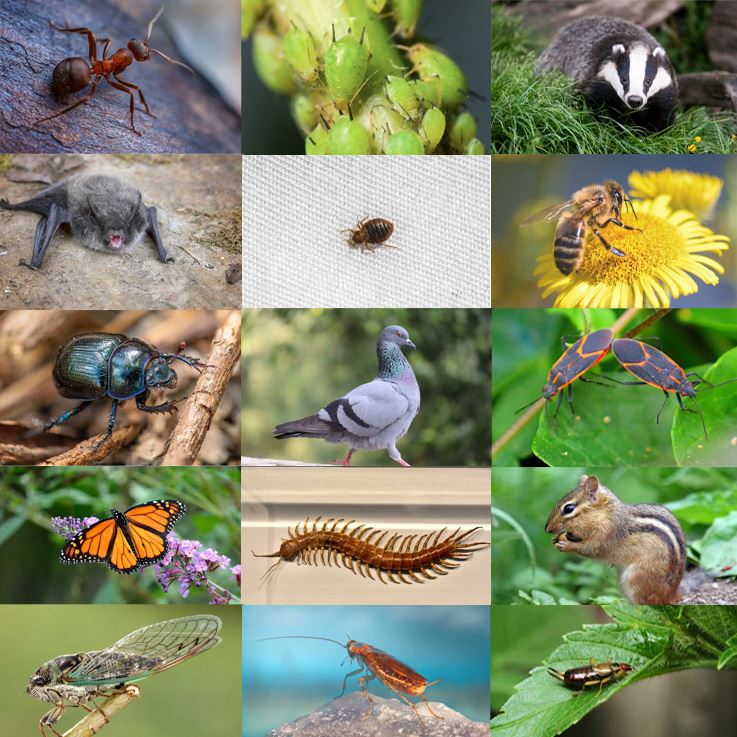
Bee Life Cycle
The life cycle of bees is a complex and highly organized biological process that follows a complete metamorphosis, encompassing four distinct developmental stages: egg, larva, pupa, and adult. While the overarching life cycle is consistent across bee species, the duration and specific characteristics of each stage can vary depending on species, environmental conditions, and whether the bee is part of a eusocial colony (e.g., honeybees and bumblebees) or a solitary species (e.g., mason bees, leafcutter bees).
- Egg Stage: The life cycle commences with the laying of an egg by a fertilized female, typically within a brood cell. In eusocial species, such as Apis mellifera (honeybee), the queen exclusively performs this function, whereas in solitary species, each female is responsible for provisioning and laying her own eggs. Eggs develop into females (workers or queens) if fertilized, and into males (drones) if unfertilized—a reproductive mechanism known as haplodiploidy.
- Larval Stage: Upon hatching, the bee enters the larval stage, during which it is a soft-bodied, legless grub. This phase is characterized by rapid growth and consumption of nutrient-rich food provided by adult bees or, in the case of solitary bees, food stores placed in the nest cell prior to sealing.
- Pupal Stage: Following the larval stage, the bee spins a cocoon (in many species) and enters the pupal stage, during which metamorphosis occurs. The organism undergoes substantial morphological transformation, developing adult anatomical features such as wings, legs, compound eyes, and exoskeletal hardening.
- Adult Stage: The final stage is emergence as a fully developed adult bee. At this point, the bee assumes its species-specific roles, whether as a foraging worker, reproductive drone, or queen. In solitary species, the adult typically emerges from a sealed cell and immediately begins independent activity, including foraging and reproduction. Worker bees live approximately 6 weeks during active seasons; overwintering workers may live longer. Drones typically live a few weeks, perishing soon after mating.
Solitary bees follow the same four-stage development but within independently provisioned and sealed cells, typically constructed in soil, wood, or hollow stems. These species often have univoltine life cycles, producing one generation per year, with larvae overwintering in a dormant state before emerging as adults in spring or summer.

Hear From Our Happy Customers
-
"Wonderful Service"
Wonderful service. Jarvis is great. Took care of everything I needed. Thank you!
- Henry P. -
"Very Knowledgeable"
The tech that arrived was courteous, professional, and very knowledgeable. He was Great.
- Uerial I. -
"Professional & Considerate"
I’m pleased with Miche services. Jarvis came today. Professional and considerate. Thank you!
- Judy B. -
"Fantastic & Patient"
Jarvis was fantastic and patient. He answered my questions with an in-depth explanation and addressed all of my areas of concern. Would love for him to be my assigned tech going forward. Well done!
- Yonnette M. -
"Great Communication"
Tech was on time, communication was great, and he accommodated my needs.
- Alonzo W. -
"Exceeds Expectations"
I can’t say enough positive things about this company... The tech that came out, Jarvis went above and beyond my expectations. Thank you guys, I will continue using your services.
- Jake M.
